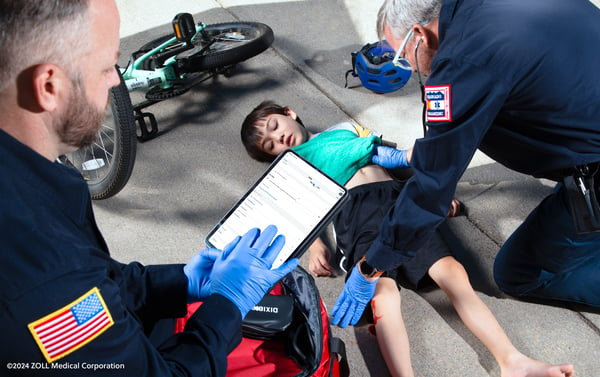Chart Smarter: Why One EMS Agency Ditched Paper for Mobile Tech
Demystifying Proper EMS Billing for Hospital Inpatient Transports Part 3: How Much Must the Hospital Pay?
This post is Part Three of a three-part series
Was this information valuable?

This post is Part Three of a three-part series. View Part One | View Part Two.
In part one of this three-part article series, we looked at how the billing rules are significantly different depending on whether the patient is covered by Medicare, Medicaid, a commercial insurer, or is a self-pay. In part two of the series, we took a deep dive into the sometimes-complicated Medicare bundling rules that apply to hospital inpatients.
In this concluding installment, we’ll explore one final issue: when you determine that the hospital, and not Medicare, is financially responsible for the transport, at what rate is the hospital required to pay you? The answer is “it depends.”
How Much Must the Hospital Pay?
First, please note that a written contract with the hospital is not required to make the hospital financially responsible for services that meet Medicare’s guidelines, as discussed in part two of this series, but having such a written agreement is certainly recommended. If your agency has a contract with the hospital, the rates set forth in that agreement would control the billable amount. Such a contract should spell out the precise situations in which the hospital is financially responsible, and establish the applicable rates (i.e., base rates, mileage) that the hospital will pay for the levels of service you provide (BLS, ALS, etc.)
Ambulance services and hospitals alike should be aware that the Federal Anti-kickback Statute (AKS) generally prohibits the hospital from paying — and the ambulance service from accepting — rates that are below the fully loaded costs of providing the service. Rates that are below your Medicare payment amounts can also raise red flags. This is true whether or not the parties have a written contract in place. Either way, whether you have a written contract or not, the ambulance service must be careful not to charge (or accept from) the facility payment amounts that are below cost.
Conclusion
Knowing how to properly bill for hospital inpatient transports can be confusing, but if you apply a systematic approach to decision making, it can be relatively straightforward. Start with identifying the primary payer, then, if the primary payer is Medicare, determine whether the origin and destination rules make the facility responsible under Medicare Part A or whether it is a separately billable charge under Medicare Part B. If the transport is interfacility, apply the “three-part test,” keeping in mind the occasional quirks we discussed in parts one and two of this article series. Good luck!
Read More:
Demystifying Proper EMS Billing for Hospital Inpatient Transports Part 1: Who’s the Payer?
Demystifying Proper EMS Billing for Hospital Inpatient Transports Part 2: Medicare Bundling Rules
Related Posts
The End of Delayed Documentation
4 Must-have Data Points for Dispatch-Billing Alignment and Maximum Reimbursement
ZOLL Pulse Blog
Subscribe to our blog and receive quality content that makes your job as an EMS & fire, hospital, or AR professional easier.
ZOLL Pulse Blog
Subscribe to our blog and receive quality content that makes your job as an EMS, fire, hospital, or AR professional easier.




